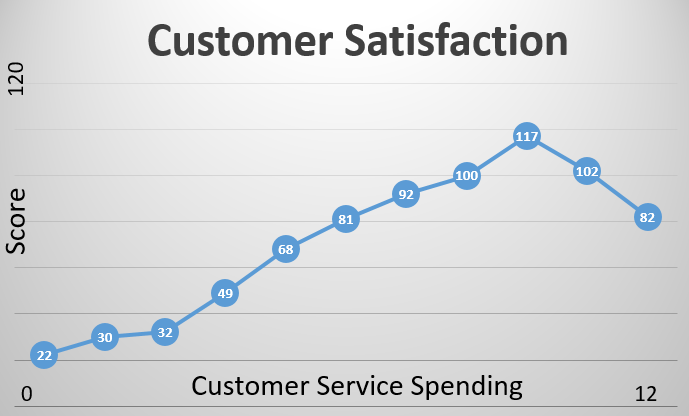
We wanted a nice quiet and pleasant dinner at a great restaurant so we could prepare for the next days’ big day of delivering Business Acumen for Sales Professionals at a client’s Global Sales Meeting.
As we entered the restaurant, we were greeted by three hostesses that checked us in. It became quickly apparent that each one of them had some sort of pre-scripted greeting;
- One asked us if this was the first time at the restaurant (it wasn’t)
- Another asked us if we would like to go to the bar first or sit down (we just wanted to sit down)
- The third asked us if our party was all here (no, actually we were going to be 4 instead of 5)
The three hostesses were a little flustered when we changed the seating from 5 to 4 and for some reason had to go back to the computer and decided to give us a different table. They asked us to wait a minute while they figured everything out.
After a few awkward moments, one of the hostesses asked if we’d like to have a drink at the bar or go to our table for the second time of the early evening.
When we got to the table, we were greeted by two more very nice people who only identified themselves by saying they were going to “look after us this evening.” We weren’t sure if they both were waiters or what was going on.
Over the next 10 minutes, they each came over to our table and in a scripted dance and covered:
- Our water selections (flat or bubbly)
- The drink and cocktail specials
- The dinner specials
- And to drop off a brochure that outlined a $129 steak dinner
Every time my party started to get into our conversation, there was an interruption. And this was only the beginning.
Once we ordered our drinks, another woman came over who I guess was some sort of manager. She wanted to welcome us and to make sure everything was alright.
Our appetizers came and the two waiters must have stopped by at least twice each to see how things were and to pour the water from the bottles into our glasses. It was at this point the service went from slightly annoying to comical.
The same thing happened when the main courses came and then- in the middle of us enjoying the meal – yet another woman came over to see how we were doing! She was dressed a little nicer so we assumed she must be the next-level manager.
On the third or fourth visit, we finally said to the waiter we are all really good and we will find if we need him. He said okay and told us he’d be standing “right over there” and to call us over if we needed anything.
It was surreal.
I recalled reading a Harvard Business Review article from June about customer service and how 60% of customers feel that they usually receive poor customer service.
If my dinner example is any indication, businesses are overcompensating in order to provide what they think is good customer service. At Advantexe, we believe that too much customer centricity is not a good thing either.
In our core Business Acumen Simulations, we have created algorithms that help illustrate and teach participants that there is a diminishing return when you invest in too much customer service; customers don’t want it and the cost to deliver the marginal customer service actually decreases profitability.
Below is a sample algorithm from our core simulations. In this model, the X axis (Customer Service Spending) is on a scale of 0 - 12. A “10” represents the highest spend in a market; a “12” means you have spent more than that.

The Y axis (Score) is on a scale of 0 – 120. A “100” is considered a very good score. A 120 is even better.
But take a look at what happens as spending goes up; there is a point of diminishing return where the customer service score actually drops when you over spend.
It is the same concept as my story about dinner. By the time the 10th different person asked how dinner was, there was no additional value; it actually detracted from the experience.
In summary, customer centricity is a value proposition and to execute it well you have to be significantly better than your nearest competitors in service. However, just spending money and throwing resources at customers can have a negative impact.




